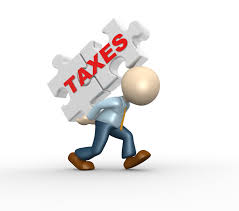When President Trump announced the broad-ranging plan to cut corporate taxes, one of the primary reasons was to boost the U.S. economy. He offered a one-time tax break to companies holding assets overseas to bring it back to the U.S. and he cut the corporate tax rates. This was supposed to induce an economic boom in the U.S., and it likely did help boost the economy a little, but I don’t think it had as big an impact as hoped.
Don’t get me wrong, I am not opposed to lower taxes or a booming economy, but lowering corporate taxes doesn’t mean corporations will spend the tax savings in a manner that boosts GDP. If you don’t believe me, just look at the banking industry and what happened there in 2018.
Bloomberg featured an article about the banking industry recently and according to the article, banks saved $21 billion in taxes in 2018. Despite the tax savings, the industry saw a decline in employment and a slowdown in lending.
The results were tallied from the 23 banks the Fed has deemed most important to the U.S. economy and they are the ones that go through the annual stress test. According to Bloomberg, the banks involved saw a 23% jump in dividends and stock buybacks and at the same time they cut 4,300 jobs.
As for the lending aspect of the business, the total of loans on the books increased by 2.3% in 2018, but the loan totals increased by 3.6% in 2017. You can’t completely blame the banks for this though. Banks lend based on demand from customers.
But that last point is why broad-based tax cuts don’t necessarily have the impact on economic growth that so many people think they will. Corporations, banks or other any other industry, aren’t going to increase spending just because they have more revenue. If the revenue comes from an increase in demand, then they will spend money to add employees or boost production. If the increase comes from a tax cut, that is just found money basically.
This concept is a basic tenet of a capitalist economy. If a company’s product sees an increase in demand, the company will increase production/supply in order to meet that demand. Increasing production will either lead to more hours for current employees or an increase in the total number of employees. The demand from the consumer is what will boost the production of the company and thus the overall GDP of the country.
I wrote an article about GM back in November. This was when GM announced plant closings and caught the ire of many politicians and others. I made the point that I thought GM did the right thing in closing the plants where the demand for the product wasn’t good enough.
My article was met with several negative comments about how GM had been bailed out by taxpayers and shouldn’t be closing the plants. That argument has some merit, but GM took the government’s money because it was offered to them. The demand for GM cars wasn’t there and the blame for that belongs to both the company and partially to the government. As several comments stated, the government forced car companies to produce electric vehicles and alternatives to fossil fuels.
You could make the same argument against banks. The banks were just handed $21 billion from the government. It wasn’t a direct handout, but it was a bonus via lower taxes. Instead of hiring more people or loaning out more money, they instead chose to pay the money out to shareholders and buyback shares of their own stock. While those payouts and buybacks are positive, they are not going to boost economic growth.
Politicians from both sides need to understand that tax cuts won’t necessarily create greater demand for goods and higher taxes won’t necessarily cut demand. Consumers create demand and they do so by a number means—more disposable income, tastes and preferences, changes in technology, etc.
I have made the statement for years that Fed could help increase demand, just like it can cause demand to fall. For instance, back in 2010-2012, the economy was growing, but slowly. The Fed kept coming out and saying they were going to keep rates low for the foreseeable future.
What kind of message is that? They might have well just said, “Hey, you don’t need to hurry up and buy that new car, we are going to keep interest rates low for the next year.” Why not come out and say, “Hey, we are going to raise rates by a half percent over the next six months. If you are looking to buy a new car, you should do it now.”
The Fed and the politicians need to understand that a capitalist economy is essentially based on the two most basic principles of supply and demand. If demand increases, corporations will produce more and the economy will grow. This is one instance where the benefits will trickle down to different companies and to consumers. If a factory worker is getting some overtime pay because the production at the plant has been increased, that factory worker is likely to spend a little more. The products he or she buys see an increase in demand and the production of those goods increases.
The banking industry was one of the first industries to complete 2018 earnings results and it was one industry that stood to benefit greatly from the tax cuts. It will be interesting to see, as the earnings continue to roll in, just how other industries benefitted from the tax cuts and how they chose to use the added profits.


Recent Comments